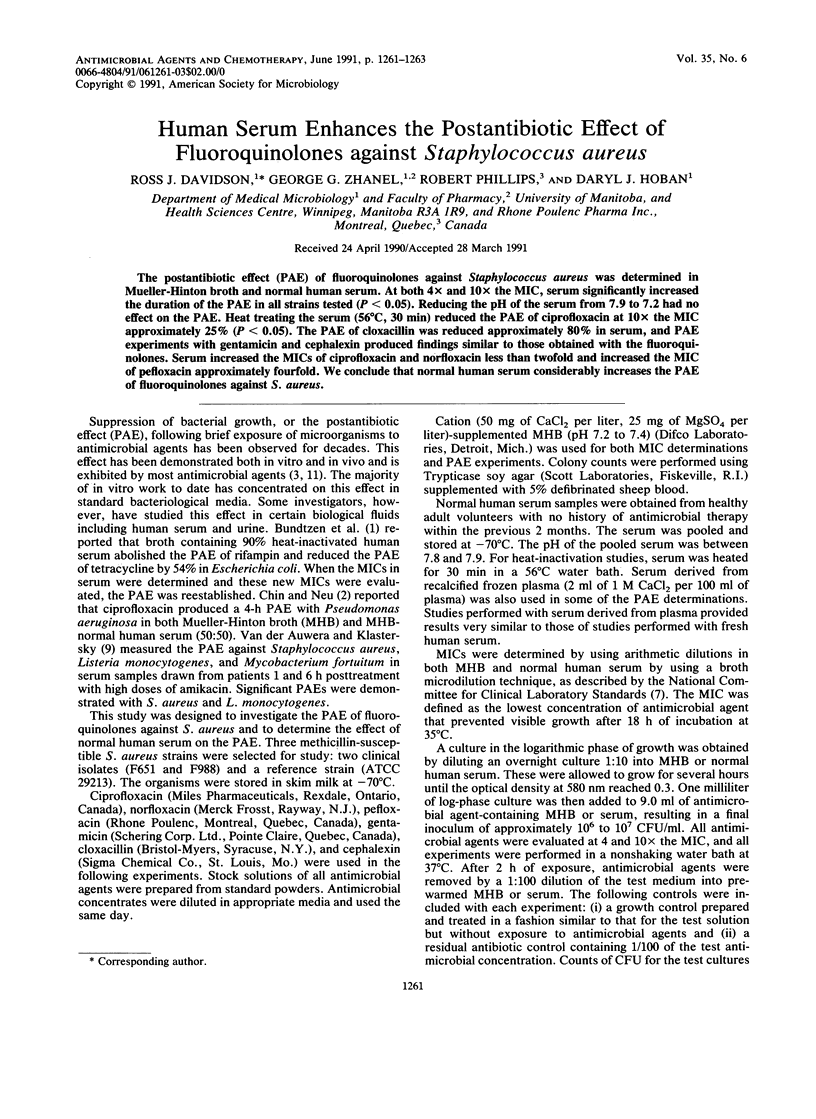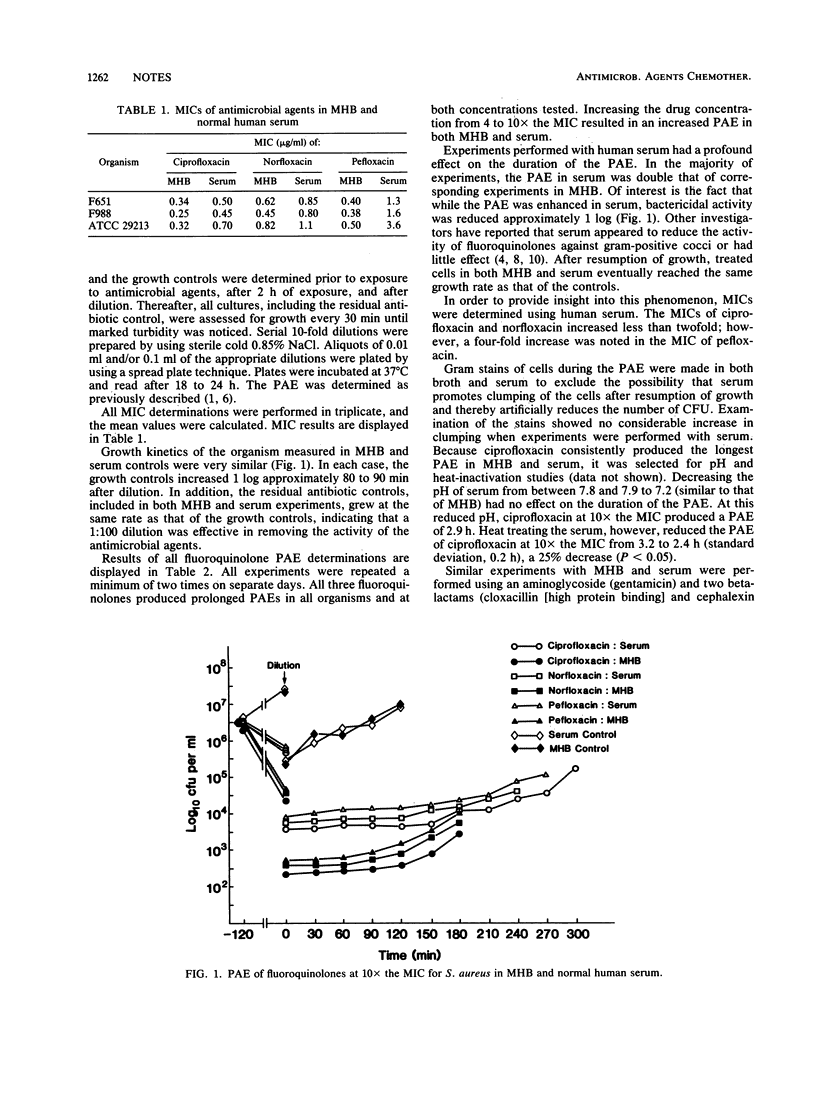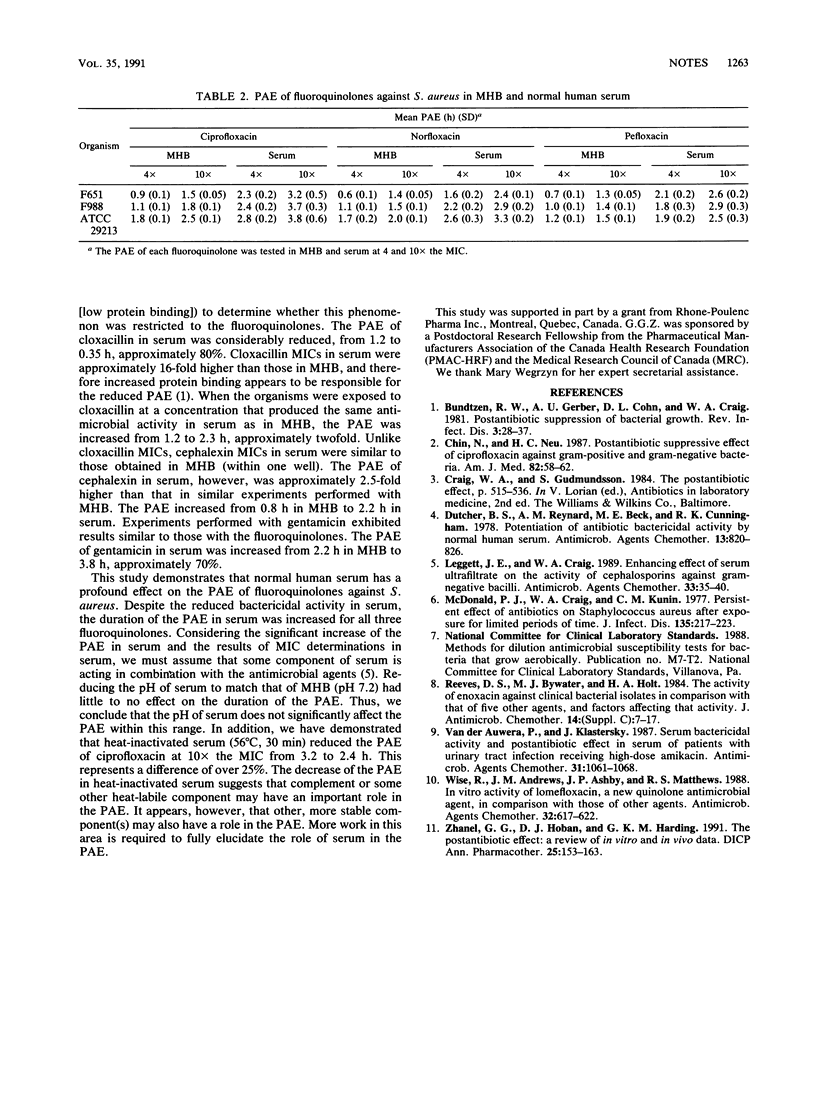Abstract
The postantibiotic effect (PAE) of fluoroquinolones against Staphylococcus aureus was determined in Mueller-Hinton broth and normal human serum. At both 4X and 10X the MIC, serum significantly increased the duration of the PAE in all strains tested (P less than 0.05). Reducing the pH of the serum from 7.9 to 7.2 had no effect on the PAE. Heat treating the serum (56 degrees C, 30 min) reduced the PAE of ciprofloxacin at 10X the MIC approximately 25% (P less than 0.05). The PAE of cloxacillin was reduced approximately 80% in serum, and PAE experiments with gentamicin and cephalexin produced findings similar to those obtained with the fluoroquinolones. Serum increased the MICs of ciprofloxacin and norfloxacin less than twofold and increased the MIC of pefloxacin approximately fourfold. We conclude that normal human serum considerably increases the PAE of fluoroquinolones against S. aureus.
Full text
PDF


Selected References
These references are in PubMed. This may not be the complete list of references from this article.
- Bundtzen R. W., Gerber A. U., Cohn D. L., Craig W. A. Postantibiotic suppression of bacterial growth. Rev Infect Dis. 1981 Jan-Feb;3(1):28–37. doi: 10.1093/clinids/3.1.28. [DOI] [PubMed] [Google Scholar]
- Chin N. X., Neu H. C. Post-antibiotic suppressive effect of ciprofloxacin against gram-positive and gram-negative bacteria. Am J Med. 1987 Apr 27;82(4A):58–62. [PubMed] [Google Scholar]
- Dutcher B. S., Reynard A. M., Beck M. E., Cunningham R. K. Potentiation of antibiotic bactericidal activity by normal human serum. Antimicrob Agents Chemother. 1978 May;13(5):820–826. doi: 10.1128/aac.13.5.820. [DOI] [PMC free article] [PubMed] [Google Scholar]
- Leggett J. E., Craig W. A. Enhancing effect of serum ultrafiltrate on the activity of cephalosporins against gram-negative bacilli. Antimicrob Agents Chemother. 1989 Jan;33(1):35–40. doi: 10.1128/aac.33.1.35. [DOI] [PMC free article] [PubMed] [Google Scholar]
- McDonald P. J., Craig W. A., Kunin C. M. Persistent effect of antibiotics on Staphylococcus aureus after exposure for limited periods of time. J Infect Dis. 1977 Feb;135(2):217–223. doi: 10.1093/infdis/135.2.217. [DOI] [PubMed] [Google Scholar]
- Reeves D. S., Bywater M. J., Holt H. A. The activity of enoxacin against clinical bacterial isolates in comparison with that of five other agents, and factors affecting that activity. J Antimicrob Chemother. 1984 Sep;14 (Suppl 100):7–17. doi: 10.1093/jac/14.suppl_c.7. [DOI] [PubMed] [Google Scholar]
- Van der Auwera P., Klastersky J. Serum bactericidal activity and postantibiotic effect in serum of patients with urinary tract infection receiving high-dose amikacin. Antimicrob Agents Chemother. 1987 Jul;31(7):1061–1068. doi: 10.1128/aac.31.7.1061. [DOI] [PMC free article] [PubMed] [Google Scholar]
- Wise R., Andrews J. M., Ashby J. P., Matthews R. S. In vitro activity of lomefloxacin, a new quinolone antimicrobial agent, in comparison with those of other agents. Antimicrob Agents Chemother. 1988 May;32(5):617–622. doi: 10.1128/aac.32.5.617. [DOI] [PMC free article] [PubMed] [Google Scholar]
- Zhanel G. G., Hoban D. J., Harding G. K. The postantibiotic effect: a review of in vitro and in vivo data. DICP. 1991 Feb;25(2):153–163. doi: 10.1177/106002809102500210. [DOI] [PubMed] [Google Scholar]


